Trailblazer Opha May Johnson Becomes the First Female Marine
It’s been said that history is made by those who show up. Last week,The New York Times ran a story on First Lieuntenant Marina A. Hierl; Hierl is one of only two women to pass the Marine Corps Infantry Officer Course. Lieutenant Hierl made further history as she was assigned her own platoon to lead. Hierl is one of the people that shows up. Opha May Johnson led the way for women like Lieutenant Hierl and proved that you can make history by showing up first. 100 years ago today, Johnson earned the distinction of becoming the first woman to enlist in the United States Marine Corps.
Born Opha May Jacob in Kokomo, Indiana in 1879, the future Marine attended Wood’s Commercial College. She earned the rank of salutatorian, graduating from the shorthand and typewriting department in 1895. Three years later, she married Victor Johnson, musical director of the Lafayette Square Opera House in Washington D.C.
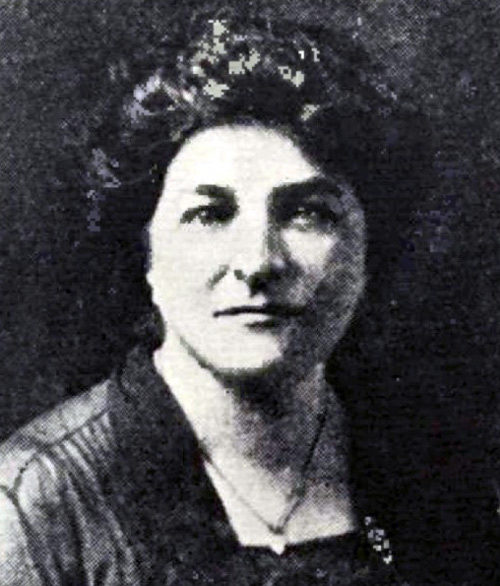
According to the Richmond Time-Dispatch dated September 1, 1918, Johnson was already a civil servant, working for the Interstate Commerce Department, when the chance came up for her to apply to the United States Marine Corps Reserve. The reserve had been established in 1916, concurrent with the U.S.’s involvement in World War I. During the last two years of the war, women were allowed to join branches and reserves to cover responsibilities typically held by men that were under active deployment; 33,000 women would eventually serve support staff.
On that day in 1918, Opha May Johnson found herself at the front of the line. Private Johnson became the first of over 300 women that would enlist in the Marine Corps during the remainder of World War I. Her first assignment sent her to Marine Corps headquarters; she worked there as clerk where she managed the records of the other new, female Marines. After the conclusion of World War I in November, 1918, the various branches of the service began discharging all women from active duty. Johnson took a job as a clerk in the War Department (which would be renamed as the Department of Defense in 1949).
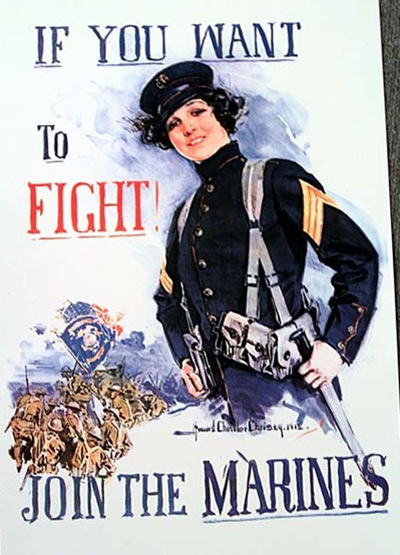
Johnson died on August 11, 1955, at Mount Alto Veteran’s Hospital in Washington, D.C. Her funeral services coincidentally fell on August 13, 37 years to the day after she enlisted. She is buried in an unmarked grave in Rock Creek Cemetery in D.C. Last year, the Women Marines Association began to fund-raise to install an official marker; the successful project will result in a site unveiling on August 29, with the Commandant of the Marine Corps, General Robert B. Neller, scheduled to speak.
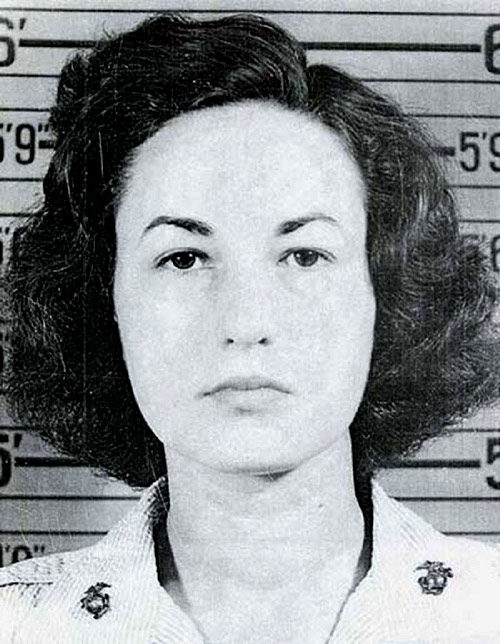
Since Johnson’s historic enlistment, thousands of women have served in the U.S. Armed Forces in combat and support capacities. As of 2015, around 2 million veterans in the U.S. were women. Johnson helped pave the way for later Marines like Bea Arthur; before becoming the actress best known for Maude and The Golden Girls, Arthur drove a truck as a member of the Women’s Reserve and attained the rank of staff sergeant during her stateside service in World War II. The late Margaret Brewer, the first female Marine to be made a general, was promoted to brigadier general in 1979. As of May 2018, 92 women serve in combat positions in the USMC; approximately 7% of the 186,000 active Marines are women.
8 Things You Didn’t Know About the Marines
The phrase “The United States Marine Corps” immediately conjures a number of images and ideas. Toughness. Honor. Tradition. And while that reputation can be traced back to 1775, the “Act for establishing and organizing a Marine Corps” was signed by President John Adams on this date, July 11, in 1798. On its 220th anniversary, we look some of the longstanding traditions that make the Marines the Marines. Some are reflected in the modern culture of this military branch, while others are just downright peculiar.
1. The Marines Have Two Birthdays
The modern Marine Corps descended from the Continental Marines assembled under the Continental Marine Act of 1775, which was initiated by the 2nd Continental Congress on November 10th of that year. Though the Continental Marines were disbanded at the end of the Revolution, the United States Marine Corps still commemorates November 10th as their official creation.
The Marines were “reborn” in 1798. The creation of the United States Navy and Marine Corps grew out of clashes with the French navy during the French Revolutionary Wars. An act of Congress formed the Navy in 1794, with Marines recruited to serve on newly created ships by 1797. Adams signed the “Act for establishing and organizing a Marine Corps,” authorizing a battalion of 500 privates along with a major and other officers. Revolutionary War veteran William Ward Burrows was made an initial major. Marines would serve in the Quasi-War, that undeclared war between the new French Republic and young United States that occurred between 1798 and 1800.
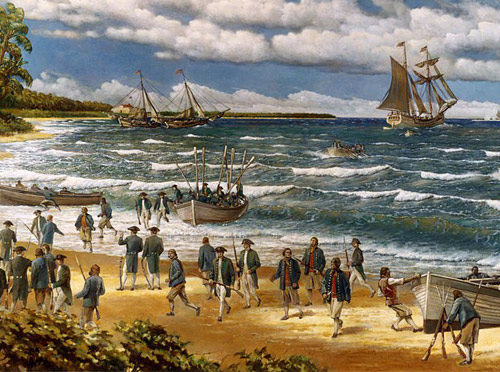
2. Why the Marines are “Marines”
The term Marine came from the type of infantry that supports naval operations. The Marines of the American Revolution typically mounted amphibious assaults, landing from tall ships to conduct raids in locations like British ports in the Bahamas. During the Barbary Wars against piracy that ran from 1800 to 1815, Marines frequently fought in ship-to-ship battles, boarding vessels to capture them.
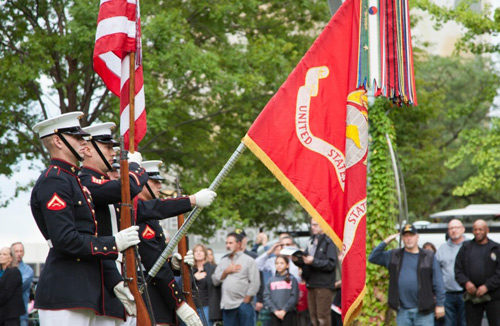
3. Thomas Jefferson Chose the D.C. Barracks Site
In 1801, President Thomas Jefferson and Burrows, now Lieutenant Colonel Commandant of the Marine Corps, chose the site of the Marine Barracks in Washington, D.C. A National Historic Landmark, it is still in use today as the official residence of the Commandant, the home of the U.S. Marine Drum and Bugle Corps, and the main ceremonial location for the Corps.
4. The Dress Blues Were Overstock
Sometimes a uniform is carefully designed and thought out over time. And sometimes, you take what you can get. The familiar ceremonial “dress blues” of the Corps adopted their look from an overstock of blue jackets with red trim that Burrows received upon his original appointment to major.
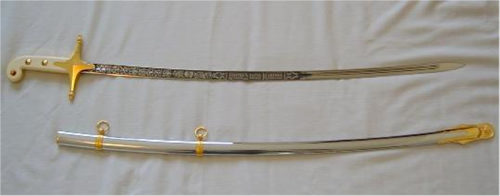
5. The First Marine Sword Was a Gift
While battling Barbary pirates in Africa, First Lieutenant Presley O’Bannon, eight other Marines, and over 300 mercenaries of Arab and European origin mounted an assault on Tripoli in an attempt to liberate the captured crew of the U.S.S. Philadelphia. Though they did not take the city, deposed Prince Hamet Karamanli allegedly presented a Mameluke sword to O’Bannon after the Battle of Derna. The sword story sparked the tradition of Marine officers wearing swords in dress blues.
6. Why Tripoli Is in the Marine Hymn
The other lasting legacy of the action was the inclusion of the lyrics “to the shores of Tripoli” in the Marines’ Hymn by Thomas Holcomb in 1942. The Hymn is the oldest of any of the songs that represent the U.S. Armed Forces. The original music was written in 1867 by Jacques Offenbach, but it wasn’t adopted as the official music of the Corps until 1929.
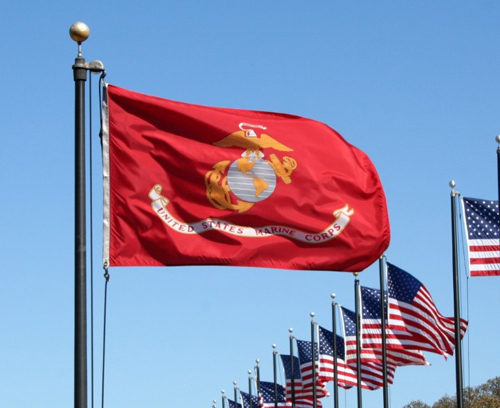
7. There Are a Lot of Active Marines
Today, the USMC boasts 186,000 active Marines with around 38,500 reserves. Roughly 7.6% of today’s Marines are women. Of the more than 22 million veterans living in the United States as of 2014, less than 1% were Marines.
8. They Perform MANY Jobs
Over 336 MOS (military operational specialist) codes, or job types, are presently available in the Marines; paths include everything from infantry to avionics to 60 different categories of linguistics. Even as new avenues for duty continue to expand, it’s safe to say that, even after more than 200 years, the Marines continue to pursue high standards in their service to the country.